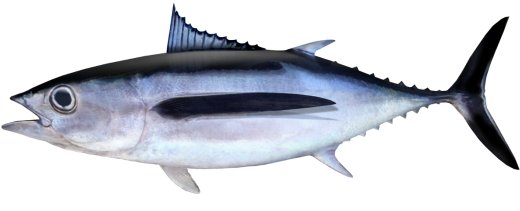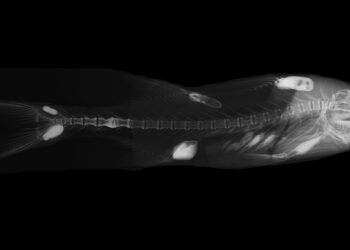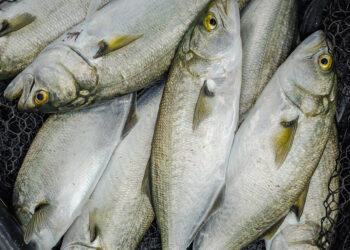
IN this month’s Fish Facts, Dr Ben Diggles discusses the effect that global warming will have on certain fish and how traditional territorial waters may be shifting for some species like albacore tuna.
THERE has been a lot written about the likely downsides of global warming, including such things as more extreme weather events, coral bleaching events and, of course, rising sea levels. But there are also some potential upsides that need to be considered when discussing this topic. An example of this is the phenomena regarding increased opportunities for albacore and other tunas to seasonally access more temperate latitudes for longer periods.
Indeed, a recent study by Canadian scientists from their Department of Fisheries and Oceans, published in the journal Fisheries Oceanography, concluded that under predicted future global warming scenarios, there would be a large increase in the area available for albacore (Thunnus alalunga) stocks in Canadian waters of the North East Pacific, potentially yielding at least half a million square kilometres more new foraging habitat than currently exists.
Closer to home, scientists studying the East Australian Current (EAC) have documented more regular and increased southward extension of warm eddies from the EAC into Victorian and Tasmanian waters, resulting in larger congregations of albacore, skipjack (Katsuwonus pelamis) and southern bluefin tunas (Thunnus maccoyi) at the nutrient rich edges between the warmer and cooler waters.
It has been estimated the southward penetration of the EAC has increased by around 350km since 1945. This trend is expected to continue over the next 50 to 75 years and by 2100 models predict that summer sea surface temperatures off the east coast of Tasmania are expected to be at least 2 – 3 degrees celcius warmer than they are today, thus extending potential habitat area for more tropical tunas and billfishes. If you are interested in reading up on the technical details, they can be found here.
However, these studies tend to only look at the simplistic effects of warming on sea surface temperatures, and indeed the authors of the Canadian paper noted that much of the potential new albacore habitat they identified would be in oceanic waters with relatively low productivity. They assumed for the purposes of their paper that “other biologically important factors such as food will not be limiting”, which is a pretty big assumption.
By way of background information, albacore are known to be distributed throughout the world’s tropical and temperate oceans from the equator to around 45 degrees latitude in both the northern and southern hemispheres. Juvenile albacore prefer surface water temperatures around 15 – 20 degrees celcius, so are usually encountered at higher latitudes around 35 – 45 degrees N and S. Warming of these waters may increase the foraging habitat area available for them in some parts of the world (e.g. off Canada), but it may reduce the available area in other places, so its difficult to predict what the overall net effect of warming may be for the juveniles, especially considering that plankton productivity of warmer surface waters tends to be less than cooler waters, meaning that available food may indeed be a limiting factor.
Juvenile albacore are certainly renowned for their inclination to concentrate along temperature fronts between cold and warm waters. Here they feed on baitfish such as anchovies and pilchards, as well as squids and crustaceans, which frequent temperature fronts and upwellings because of the plankton blooms generated by the turbulent mixing of warm waters with nutrient rich cool water. In these circumstances, albacore often form mixed schools with skipjack, yellowfin (Thunnus albacares) and bluefin tuna (Thunnus maccoyii), from which they are easily identified by their extremely long pectoral fins.
In contrast, larger adult albacore are usually found in deeper sub surface waters and can tolerate a wider temperature range of around 13° to 25°C, though they have been recorded to tolerate temperatures as low as 10°C for short periods in deep water. Near the equator larger albacore can sometimes be found as deep as 600 meters, their depth being limited not by water temperature, but by low oxygen levels.
However, warmer water holds less oxygen so under global warming scenarios the area available for adult albacore may be reduced due to more limited oxygen availability, potentially cancelling out any potential benefits that could arise from increased foraging area available for juveniles. So the effects of a warming world are complex, potentially leading to many piscatorial “swings and roundabouts” situations, so it remains to be seen what will happen as the global experiment gains momentum.
For more fish facts relating to the biology of albacore, see Dr Ben Diggles’ previous Fish Facts article for Fishing World.
















